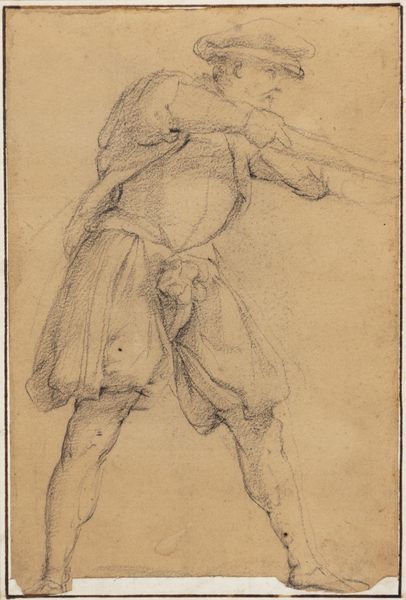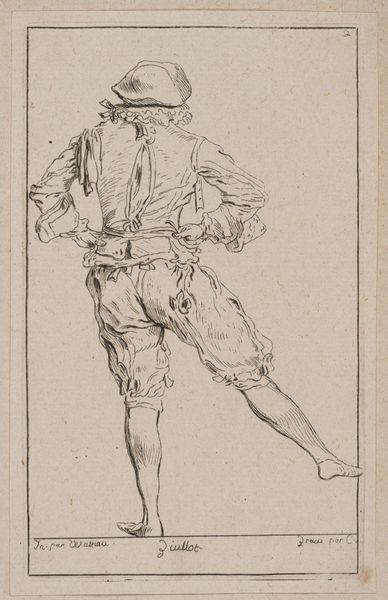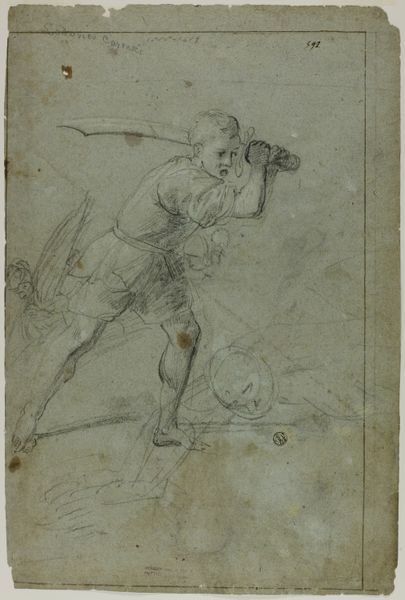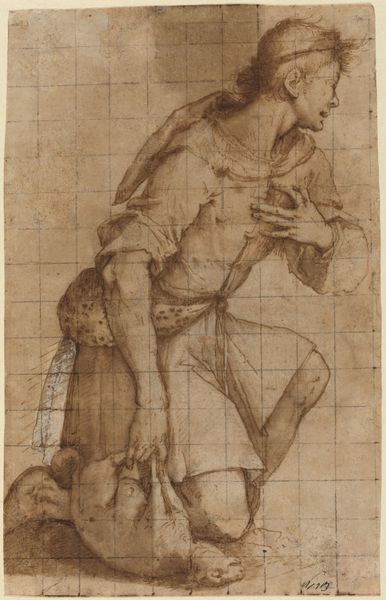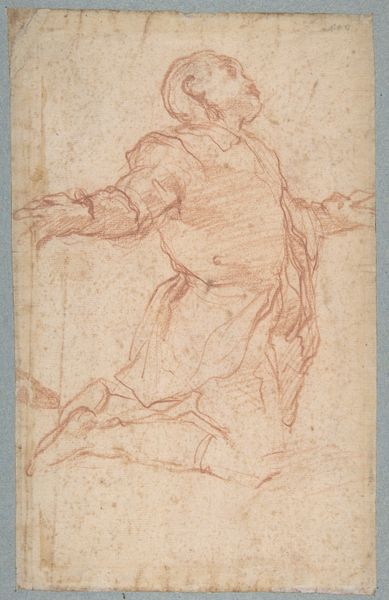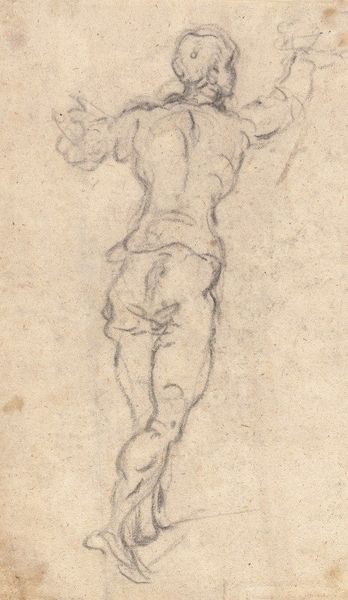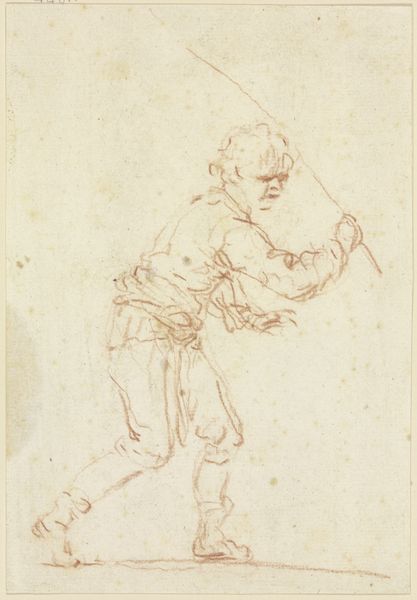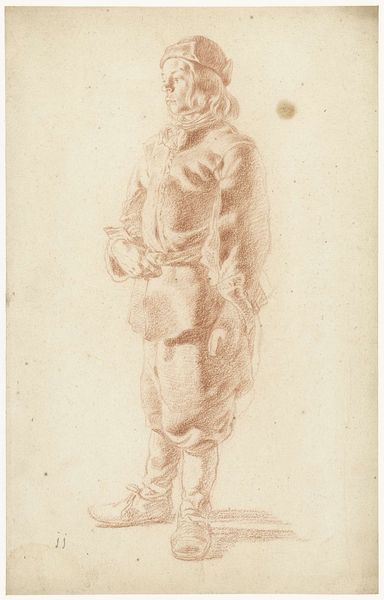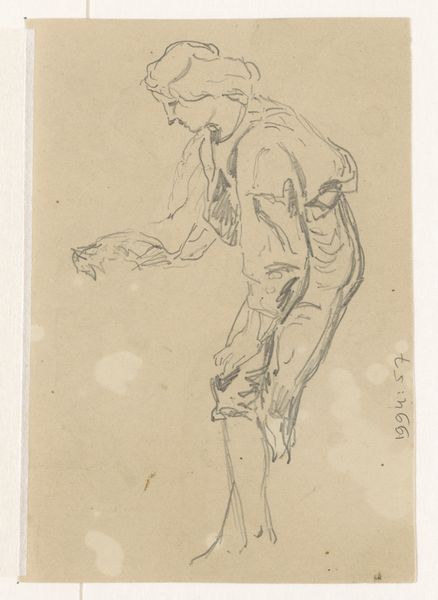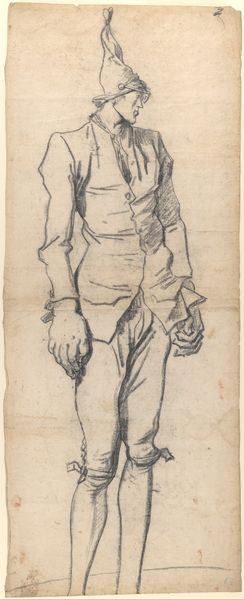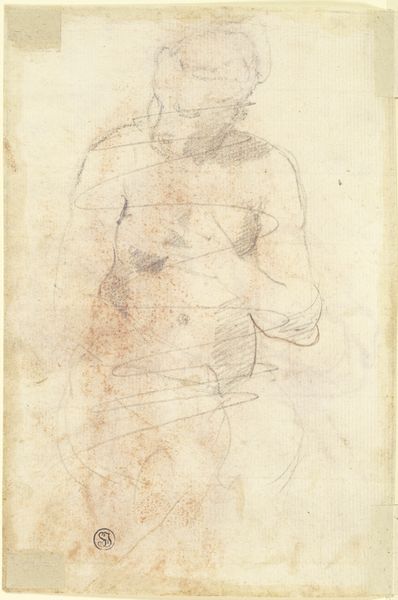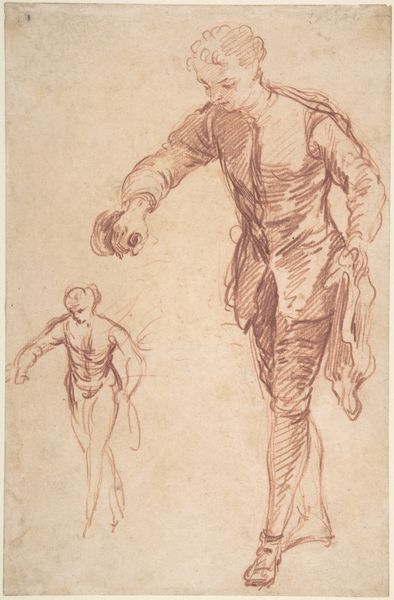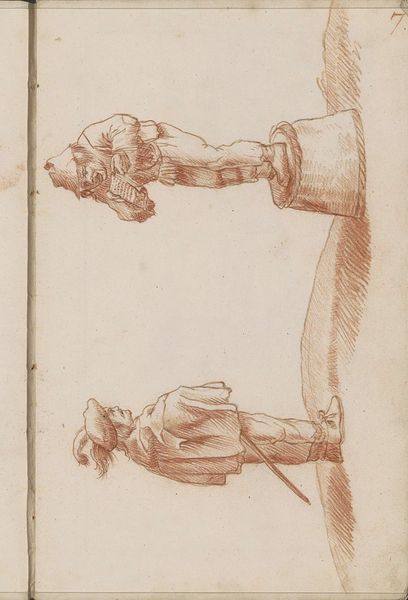
Kneeling Youth in Armour 1611 - 1689
0:00
0:00
drawing, print, pencil
#
portrait
#
drawing
# print
#
pencil sketch
#
mannerism
#
pencil
#
history-painting
#
armor
Dimensions: 16-7/16 x 11-1/4 in. (41.8 x 28.5 cm)
Copyright: Public Domain
Curator: Just look at this drawing—a "Kneeling Youth in Armour," sketched in pencil between 1611 and 1689 by Baldassarre Franceschini, or as he's often called, il Volterrano. It’s currently held at the Metropolitan Museum of Art. Editor: There's such a tender melancholy in the pose; the armor seems too heavy for the slightness of the youth beneath it. A world weariness even in a sketch. Curator: That heaviness you're sensing—think about the societal pressures baked right into the very materials themselves. Metal armor, requiring mines, forges, skilled labor. Each stage, imbued with power structures and dependencies. It wasn’t just slapped together, you know. Editor: But he looks…resigned, somehow. The hand almost protectively laid on his breastplate, head bowed. You see so much strength; I'm seeing the opposite. Like he's mourning the end of innocence, a premonition, perhaps, of the violence the armor is meant to prepare him for. Curator: True enough, there is the very real human impact on its creation, and the violence implied with armour – but how can we ignore how the armor itself also performs status, declaring something powerful about who could afford to wear, own, make something like this. Who has to sacrifice their own youth or even lives. Even the artist depends on a wealthy market for his materials! Editor: And what a market, indeed. You start to wonder about all the other unacknowledged labour – how about the mining for metal ore. It’s all connected isn’t it. How Volterrano might've understood his dependence. Curator: It's almost brutal, that honesty. The red chalk digging in...not idealizing war but, perhaps, illustrating the real conditions of labour that went into these conflicts. Not merely knights and shining armor, but someone, somewhere, must have to give everything up to even fight! It’s so obvious now you point that out... Editor: Yes, and you brought that piece fully to life – it is much richer thinking now than just a melancholy portrait. Curator: Well, let's hope our listeners take something poignant away, a deeper appreciation for a sketch from ages past and how it is relevant today.
Comments
No comments
Be the first to comment and join the conversation on the ultimate creative platform.
